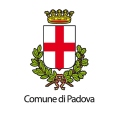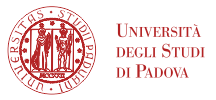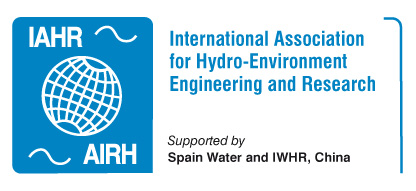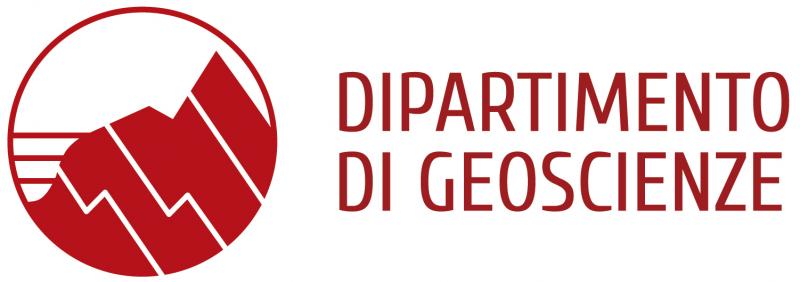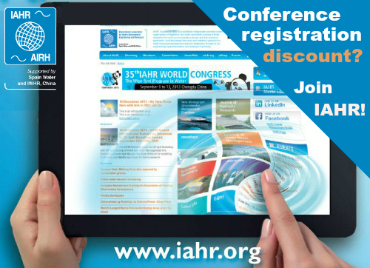
Venue
The conference will be held at the San Gaetano Cultural Centre of Padova, situated in the heart of the city.
San Gaetano Center is a five-storeyed structure with a total floor area of 12000 m2. A multi-purpose room (Auditorium - hosting 234 persons) will be used for the keynotes and one of the two parallel sessions.
A wide gallery at the ground floor will hold the second parallel session, the poster sessions and the coffee breaks.
The Gala Dinner will take place at the Botanical Garden of Padova designed in 1545 (Horto medicinale) and inscribed in 1997
on the World Heritage List as a cultural good: “the Botanical Garden of Padova is the original of all botanical gardens throughout the world, and represents the birth of science, of scientific exchanges,
and understanding of the relationship between nature and culture. It has made a profound contribution to the development of many modern scientific disciplines, notably botany, medicine, chemistry, ecology,
and pharmacy.”
During the field trip, a boat will bring all the participants from Padova directly to the Venice lagoon. We will sail along the Riviera del Brenta enjoying its landscape and its Venetian villas. Once reached the lagoon, we will see some salt marshes and the Lido Inlet where the activities related to the construction of the movable gates of the MOSE project are still ongoing. The cruise will end mooring close to San Marco’s square in the city of Venice.
PLAN YOUR STAY
TRENTO, hosting the pre-Conference
The city of Trento: the unique charm of a renaissance alpine city, where history is art.
Trento is a city rooted in art and history, where the Italian and Mitteleuropean cultures meet. Unique amongst the alpine cities, the City of the Council (1545 - 1563) still keeps its precious monuments as tokens of its rich artistic and historic heritage. Built in the elegant renaissance style, they have been enhanced by recent refurbishing works.
Special mention goes to the Castello del Buonconsiglio, the Castle for several centuries residence of the Prince-Bishops of Trento; the Duomo, the Cathedral of Trento dedicated to San Vigilio, its gorgeous piazza and fountain dedicated to Neptune, the frescoed houses and Council churches as well as the museums and exhibitions which make the city of Trento a true landmark of alpine arts, culture and traditions.
Concilio di Trento (Concilium Tridentinum)
The Council of Trento, held between 1545 and 1563 in Trento and Bologna, was one of the Roman Catholic Church’s most important ecumenical councils. Prompted by the Protestant Reformation, it has been described as the embodiment of the Counter-Reformation.
Castello del Buonconsiglio (Buonconsiglio Castle)
The Castello del Buonconsiglio is the largest and most important monumental complex of the Trentino Alto Adige region.
It was the residence of the Principi Vescovi (Prince-Bishops) of Trento from the 13th century to the end of the 18th century, and is composed of a series of buildings of different eras, enclosed by walls and positioned slightly higher than the city:
- the Castelvecchio is the oldest part, dominated by an imposing cylindrical tower
- the Magno Palazzo is the 16th century expansion in the Italian Renaissance-style as commissioned by the Prince-Bishop and Cardinal Bernardo Clesio (1485-1539)
- the Baroque-style Giunta Albertiana dates from the end of the 17th century
- at the extreme south of the complex is the Torre Aquila, within which is conserved the famous Cycle of the Months, one of the most fascinating secular pictorial cycles of the late Middle Ages.
Also of exceptional interest are the extensive cycle of frescoes commissioned by the bishops to decorate the interior walls of the Castle, mainly in the late Middle Ages to the Renaissance period. After the end of the Episcopal principality (1803) the castle was used as a barracks; following its restoration in 1924, it became the National Museum, and since 1973 it belongs to the Autonomous Province of Trento.
Duomo di Trento (Cathedral of Trento)
Trento’s Cathedral is dedicated to Saint Vigil and has ancient origins.
There are in fact records that indicate the first church was built on the burial ground of this saint, martyred in the fifth century. It was then enlarged, whilst its present appearance is owed to Bishop Federico Vanga, who entrusted the redesigning of the cathedral to Adam d’Argogno in 1212. The position of the church is the result of his plan.
The construction, continued over the centuries by d’Arogno’s descendants, underwent various changes with respect to the original project due both to the churches needs and the changes in construction techniques. The contrast between the Romanesque style and the height of the vaults recalling gothic cathedrals is extraordinary. Two climbing staircases built into the lateral walls lead up to the two bell towers, in the opposite direction to the altar. Amongst the numerous works of art it is worth noting the worshipped wooden statue of Our Lady of Sorrow, some of the altars, a series of canvasses, the Romanesque sculpture (credited to Adam d’Arogno) called the Madonna of the Drowned, at whose feet the bodies of people who drowned in the Adige or the irrigation channels that flowed through the city and funeral monuments of numerous famous political and religious characters were placed.
In the southern aisle the Alberti Chapel can be found. This contains a large crucifix, in front of which, on 4 December 1563 at the end of the Council, the decrees of the counterreformation were promulgated.
The high Altar with a baroque canopy above, erected in the middle of the eighteenth century with the annulment of the citizens vote during the French siege of 1703, holds the urn with the relics of Saint Vigil.
The frescoes, created between the 13th and 15th century, can be attributed to painters from Venetian, Lombardian and late gothic schools and depict classic Christian themes.
The palaeochristian basilica can be entered from the northern transept, which an excavation campaign lasted several years made accessible.
Trento offers visitors its richly historical and artistic heritage all year around. Visitors can admire its beauties while strolling around the city centre’s alleys, enjoying shopping or visiting the city’s museums.
Museo del Castello del Buonconsiglio
The castle has numerous art and archaeological collections that were first assembled in the mid-19th century within the Civic Museum of Trento and include objects that date from prehistory up to the first half of the 19th century documenting the historical and artistic events of Trento and its surrounding territory.
For more information, please see the dedicated website.
MUSE, Museo delle Scienze (MUSE, Science Museum)
MUSE is a place of constant change, from the main exhibitions, up to date with the latest developments, to special projects, with prestigious national and international collaborations, and finally to MUSE Lab, where the most advanced experiments in the field of new technologies take place.
The exhibition of Muse uses the metaphor of the mountain to describe life on Earth.
You start from the top: the terrace and the 4th floor allow us to encounter the sun and ice, and from there you descend to investigate the issues of biodiversity, sustainability, and evolution, until you reach the basement and the wonder of the tropical greenhouse.
Museo dell’Aeronautica "Gianni Caproni" (Aeronautical Museum "Gianni Caproni")
The Aeronautical Museum "Gianni Caproni", founded by aviation pioneer from Trento Gianni Caproni, boasts the first aeronautical collection existing in the world, dating back to the 1920s.
Since the beginning of his career, Gianni Caproni decided to keep some of his main aircrafts in his garages rather than dismantling them to use them as spare parts for new projects. This choice led, in 1927, to the creation of the Museum. The Aeronautical Museum "Gianni Caproni" was reopened in Trento in 1992, and was later integrated into the network of science museums headed by MUSE, Science Museum.
At present, the Museum aims at the diffusion of the history and culture of aeronautics to the general public by organizing permanent and temporary exhibitions, specific activities for schools, cultural events and scientific publications.
PADOVA, hosting the Conference
Padua is one of the oldest and most dynamic Italian cities. Founded more than 3,000 years ago along a curve of the River Brenta, today it is modern and cosmopolitan, and rather well-known for its historic and glorious University and for innumerable art masterpieces diffused throughout the city. You can not miss:
Basilica of St.Anthony and Prato della valle
Palazzo della Ragione . It was built in 1218. Until 1797 it was used as city council's assembly hall and palace of justice (hence the appellation della Ragione, meaning of reason).
University and Cafè Pedrocchi
Spritz
a pleasant local drink in one of the central piazzas (Piazza delle Erbe, Piazza della Frutta or Piazza dei Signori), starting between 7 and 8 in the evening.
For more information:
http://www.turismopadova.it/en
http://www.discoverpadova.com/index.php/en/?Itemid=127
http://www.padovanet.it/informazione/what-see#10109
GETTING IN
Trento
BY PLANE
The nearest airports to Trento are:
1. Verona Valerio Catullo, Italy (90 km);
2. Treviso A. Canova (135 km)
3. Venice Marco Polo, Italy (163 km);
4. Innsbruck, Austria (172 km)
5. Bergamo Orio al Serio, Italy (180 km)
6. Milano Linate and Malpensa, Italy (250 km)
7. Munich, Germany (312 km)
By plane to Verona Valerio Catullo Airport Verona-Trento by train about 1 hour The closest airport to Trento is the International Airport of Verona Valerio Catullo.
The airport
offers connections to the major European destinations, including the international hubs of Frankfurt, Paris, London Gatwick, and Rome, and some low-cost flights (RyanAir from Frankfurt and Bremen;
Transavia from Amsterdam; Germanwings from Berlin, Bonn and London Stansted). For more information visit the airport website. From the Verona Catullo airport to Verona Porta Nuova Railway Station,
an Aerobus service is available every day, every 20 minutes.
You can find the shuttle to the railway station just outside the arrivals terminal of the Verona airport. You can buy the ticket
online, directly on the bus or inside the airport in a ticket booth. The cost of a one-way ticket is 6 EUR.
The bus is available from 6:35 AM to 9:10 PM, every 20 minutes; from 20:10 to 11:30
every 40 minutes. The trip from the airport to the train station is around 15 minutes. For prices and timetables for the Verona-Trento train, please visit the site Trenitalia.
By plane to Treviso A. Canova The international airport A. Canova can be considered to reach Trento. Treviso-Trento by train about 3 hours. Treviso international A. Canova Airport is
connected by a bus and taxi service to the nearby Treviso and Venezia Mestre railway stations: Locations served by bus from Treviso Antonio Canova Airport • Treviso: ACTT Line 6 • Venice
railway station and Piazzale Roma: ATVO line.
The bus can be caught from the airport: in Via Noalese, to the right of the airport exit. Tickets can be bought at the ticket office in the Arrivals
hall on the ground floor of Treviso Airport terminal building or on the bus. Connections between Treviso Canova international Airport and the Treviso and Venezia Mestre railway stations • Treviso
station • ACTT Line 6 Journey time: 15-20 minutes
A bus can be caught from the airport: in Via Noalese, to the right of the airport exit. For more info please visit. http://www.trevisoairport.it/en/transport/train.html
By plane to Venice Marco Polo Airport. Venice-Trento by train takes about 2.5 hours
The International Airport of Venice Marco Polo can be considered to reach Trento. The Venice
airport is well connected to the railway station of Venice-Mestre and Venice-Santa Lucia by ATVO and ATCV buses. Venice-Mestre railway station is reachable by bus no 15, Venice-Santa Lucia railway
station is reachable by bus no 5.
Please, note that if you consider Venice-Santa Lucia railway station you have to get off the bus in Piazzale Roma and from there walk 10 minutes over the bridge
Ponte della Costituzione. You can buy the ticket from a ticket booth or online before your arrival. The cost of a one-way ticket is 8 EUR.
The bus line is available from 6 AM to 12:00 PM. The
trip from the airport to the train stations is around 35 minutes. For prices and timetables for the Venice-Trento train, please visit the site of Trenitalia.
By plane to Innsbruck Airport. Innsbruck-Trento by train takes about 2.5 hours The International Airport of Innsbruck (Austria) can be considered to reach Trento. The Innsbruck main
train station is easily accessed by train or bus from the Innsbruck Airport. Bus route F connects the Innsbruck main station with the airport main building. The journey takes about 20 minutes.
For prices and timetables for the Innsbruck-Trento train, please visit the site of Austrian railways.
By plane to Bergamo Orio al Serio Airport. Bergamo-Trento by train takes about 3.5 hours.
The International Airport of Bergamo Orio al Serio is a basis for many low-cost flights
(e.g., RyanAir from London Stansted, Paris Beauvais, Barcelona Girona, Valencia). The Bergamo railway station is easily reachable by ATB shuttle bus from the airport in only 15 minutes You can buy
the ticket either from a newspaper kiosk or from a ticket booth. The cost of a one-way ticket is 2 EUR.
The bus line is available from 6:15 AM to 12:00 PM, every 20 minutes. The trip from the
airport to the train station is around 15 minutes. For prices and timetables for the Bergamo-Trento train, please visit the site of Trenitalia.
By plane to Milano Linate Airport. Milano-Trento by train takes about 3 hours.
The airport of Milano Linate can be considered to reach Trento. Milano Linate is just 7 km from the
Milano city centre and can be easily reached with various airport shuttles and with ATM lines 73 Urban line 73 Milan Piazza San Babila M1 - Linate First departure: 5:35 a.m. Last departure: 12:35
a.m. Departures every 10 minutes, every day Fare: 1,5 euro Company: ATM www.atm.it
Further info on: http://www.milanolinate-airport.com/en/directions-and-parking/by-bus
Also, a taxi can be considered.
For
prices and timetables for the Milano-Trento train please, visit the site of Trenitalia.
By plane to Milano Malpensa Airport Milano-Trento by train takes about 3 hours.
The International Airport of Milano Malpensa can be considered to reach Trento. From Malpensa airport
take the Malpensa Express train to Milano, Stazione Nord. Once there, take subway line 2 (green line) to reach the Central Train Station. For prices and timetables for the Milano-Trento train, please
visit the site of Trenitalia.
By plane to Munich Airport. Munich-Trento by train takes about 4.5 hours.
The International Airport of Munich (Germany) can be considered to reach Trento. Trento can be directly
reached by train from Munich: for the train schedule, please visit the site of the German State railways. By train Train tickets can be purchased at the railway station. Italian train tickets must
be stamped with the yellow machines available at the platform (binario) entrance before getting on the train. In buying your ticket you should specify the arrival station (Trento), the train you
are planning to take (some InterCity trains require a supplement that is more expensive if purchased on the train) and the class: 1st (prima) or 2nd (seconda). First class is more comfortable and
about 60% more expensive.
Find trains and purchase tickets online • Trenitalia (Italian State Railways) • Deutsche Bahn (German State Railways) • Obb (Austrian State Railways)
• Sbb (Swiss State Railways)
BY CAR
If you are reaching Trento from the north, exit the A22 motorway at TRENTO NORD and follow the signs to go to the Trento city center. If you are reaching Trento from the south, exit the A22 motorway at TRENTO SUD and follow the signs to go to the Trento city center. ViaMichelin is a good link for getting detailed driving directions. Please note that trip advisors may still suggest: TRENTO CENTRO as A22 motorway, but this is closed.
Padova
BY AIR The closest airport is: Venezia "Marco Polo" Airport From the airport, travel to Padova (49 km) by:
-Bus connection SITA coach (every 60 minutes) until 10 pm.
An extra-urban bus service is available every day from the Venice Airport to Padova bus station. Departures from the
airport to the city are scheduled at one-hour intervals between 7:40 AM and 9:40 PM.
Departures from the city to the airport are scheduled at one-hour intervals between 7:25 AM and 8:25 PM.
The trip takes about 75 minutes, but the actual duration can vary according to the traffic conditions.
Tickets can be bought at either the bus station or the airport. The approximate cost for
a one-way trip is about 8.5 Eur.
http://ro.autobus.it/ro/asp/RicercaOrari.asp?User=SITA
- Collective shuttle bus service (recommended if you arrive late in the evening)
A collective shuttle bus service taking you from/to the airport according to the expected flight
arrival/departure can be reserved online in advance from:
Air Service (reservation required, see http://www.airservicepadova.it/en/ e-mail:
reservation@airservicepadova.it tel. +39 049 8704425);
- Landomas minibus (reservation required, see http://www.landomas.it/en/index.html e-mail: landomas@landomas.it tel. +39 049 8600382).
Price: around 30-35 Euros. Book at least 24 hours in advance; see the websites above for precise information.
- Train from Venezia–Mestre railway station. The airport is linked to the train station by ATVO Fly bus or ACTV city bus no. 5
Other possibilities:
Treviso "Antonio Canova" Airport: The airport serves low-cost airlines. Travel to Padova (62 km) by La Marca coach until 8.30 pm or by train. Verona "Valerio Catullo"
Airport From the airport, travel to Padova (86 km) by train.
Bologna "Guglielmo Marconi" Airport: From the airport, travel to Padova (120 km) by train.
Milano Linate Airport: From Linate, travel to Padova (240 km) by train from Milan Central Station.
Milano Malpensa Airport: From Malpensa, travel to Padova (281 km) by train from Milan Central Station.
ACCOMODATIONS
Both Trento and Padova have special agreements with local Hotels and B&B to grant keen rates to the Congress' participants. Please find in the enclosed lists 2016 rates
Interested in sponsoring, exhibiting or advertising?
Download the Sponsorship Proposal form in the Download Box.













